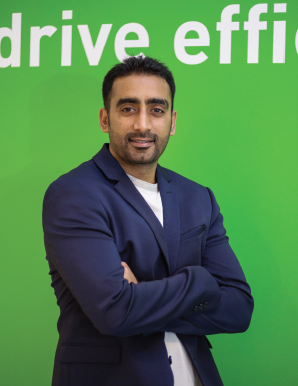For content to be relevant, meaningful and engaging, agencies’ hearts and minds must work together, says Vikrant Shetty
 For centuries, art and science have played a critical role in media/advertising and in this respect, ‘content planning’ is no different. The fusion of art and science is critical for an effective communication plan. It is important for us to know and understand our audience (science) to ensure the content we create will appeal to them (art). The absence of either one of them would only make the content we are creating less effective and impactful for our audience.
For centuries, art and science have played a critical role in media/advertising and in this respect, ‘content planning’ is no different. The fusion of art and science is critical for an effective communication plan. It is important for us to know and understand our audience (science) to ensure the content we create will appeal to them (art). The absence of either one of them would only make the content we are creating less effective and impactful for our audience.
With the continuous rise of digital content, the fusion of art and science has never been so apparent. Even a simple action like opening your social feed or YouTube involves art and science: every display or ‘piece of art’ is backed by real-time numbers. There are so many apps today that allow you to create visually attractive content – from a simple post to a quick video. But there is a science behind it. Once it is uploaded, the backend scientists are at work giving you real-time numbers of views, likes, shares and more in-depth details for data seekers like us. The information available at our finger tips is unbelievable and offers some great learning when producing your next piece of content.
However, there is a flip side to all of this.
The influx of data can also create confusion. Multiple sources tend to use different metrics to measure content. Hence there is no common benchmark for measuring all this data and information. At MEC, content is put through a funnel to measure its effectiveness. This tells us exactly where we are losing our viewers and in turn helps us improve the creativity of the content. It could be as simple as giving it a faster edit or avoiding blatant product placements/integrations that lead to drop-outs.
In spite of all this data, there is no simple answer to creating the most ideal content.
So there is a constant debate over the ideal length of video content. For some, it should be short and quick to avoid losing viewer interest or drop-outs. But I would disagree. It all depends on how engaging your content is. Let’s take XDubai as an example. They are the leaders in adventure sports in the region. You would expect them to produce short, snappy, adrenaline-filled content. But on the contrary, the video content they produce is not your usual bite-sized content. If you have watched the Emirates Jetman video or even Ford Ken Block, the average video length is between six and seven minutes. These videos have garnered millions of views. If the video can make your jaw drop or tickle some of your emotions then most probably your average viewer won’t be counting the number of seconds that have passed while watching your content.
On the other hand, look at the content that BuzzFeed produces. It is super-engaging, short and snappy. They probably don’t spend much on producing the content. So it all depends on how creative and engaging your content is for it to perform well online. Therefore, trimming down your content may not be the answer to making it more engaging.
The recent formation of MEC Wavemaker has further strengthened our core objective of bringing together the art and science of content planning. We believe that to create great content it is important to have the right balance of art and science. Understanding how consumers behave at different touch points in the purchase journey helps us to focus our creative energies into content ideas that they will engage with. It’s important to get the right content at the right place at the right time for it to be impactful and effective.
In earlier days, to create a TVC or any piece of content, the art was left to the creative agencies and the data science justification was done by the media agencies. But now, the lines are blurred and, at Wavemaker, we try and do just that. For any piece of content we produce for our brands, we merge art and science as part of our offering.
Like science, which is ever-evolving, we too are progressing towards making our content not only visually attractive but scientifically justified, enabling us to produce content that is relevant and meaningful for our consumers.
Vikrant Shetty- Director of client servicing at MEC Wavemaker









